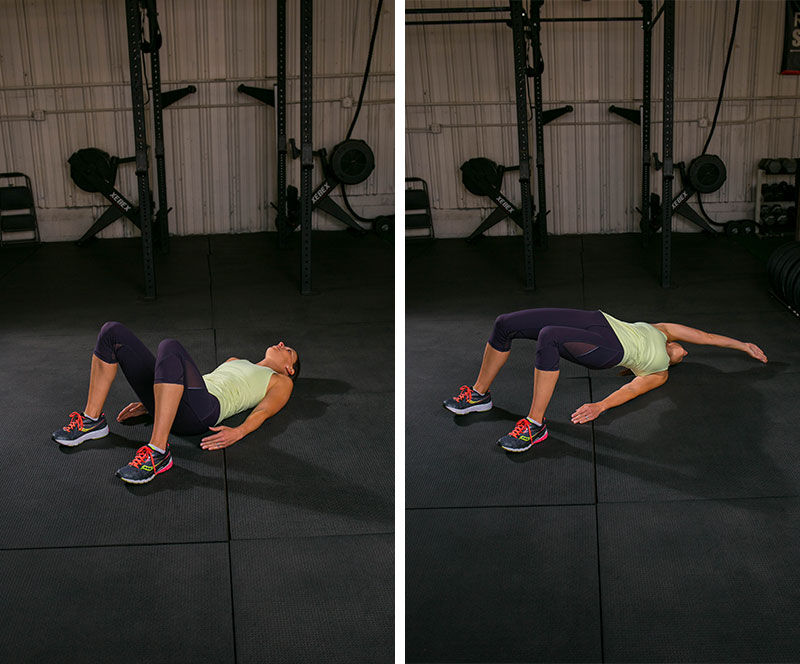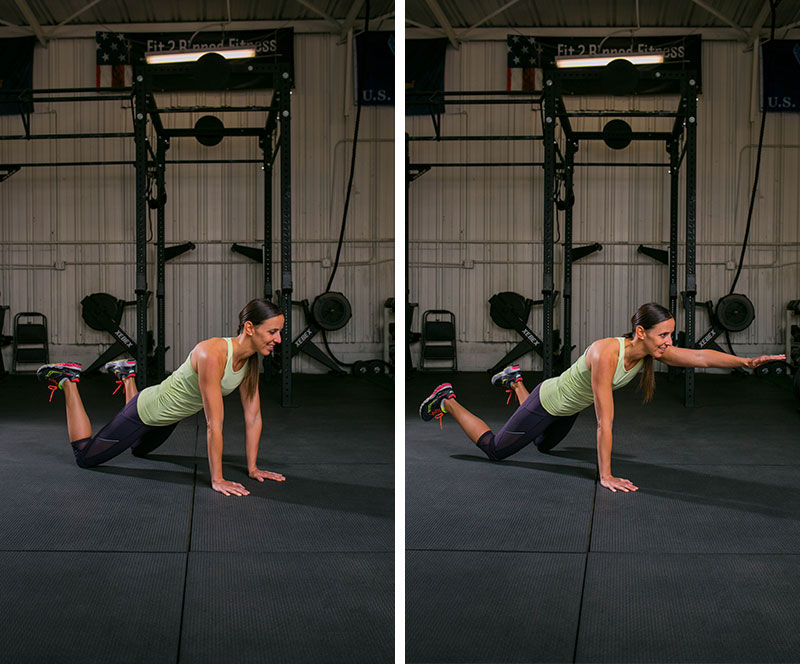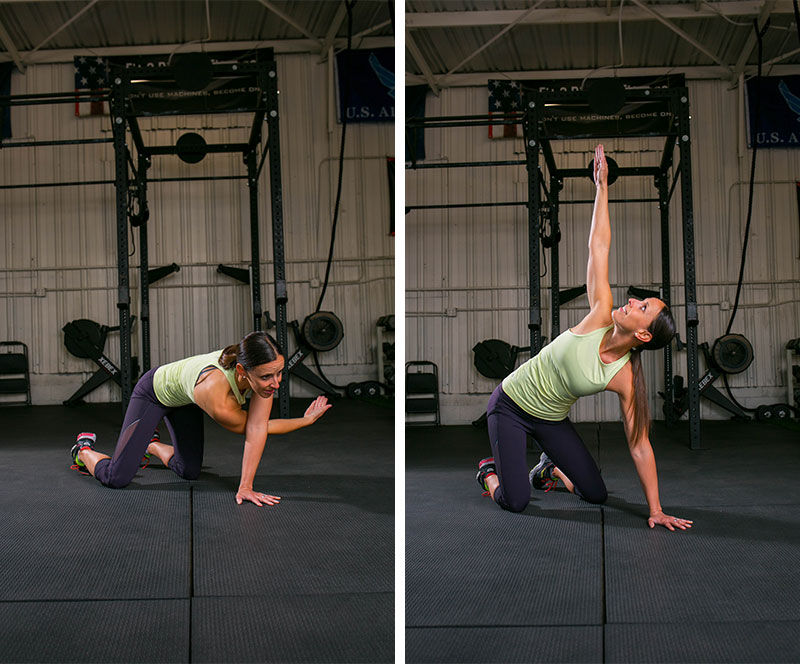Strengthening the core is an excellent way to help your clients improve posture, move more efficiently and reduce their risk of injuries. Ideally, the muscles of the trunk and pelvis and the joints at the hip, lumbar spine (low back), thoracic spine (mid back) and shoulder work synergistically to create effective movement patterns. If your clients spend too much time seated during the day or if they have faulty movement patterns, this fluidness is disrupted and negatively impacts how they move and feel.
The lumber spine and scapula-thoracic joints create stability in the body. If the muscles and connective tissues of these areas are strengthened, it is easier to maintain control of that joint. Other joints, like the hip and glenohurmeral joint, allow for mobility at the articulation (where two bones meet) and ideally create an uninhibited range of motion around the joint.
Performing movement patterns that maintain stability and mobility in the trunk is essential and should be repeated daily. Whether it’s first thing in the morning or during an afternoon break, urge your clients to work on firing up the core with these functional core exercises.
Singe-leg Down-dog With Hip Opener
From a plank position on the hands, lift the right leg up toward the ceiling. Bend the knee and let the right foot fold over toward the left hip. Hold this stretch for a few seconds and then bring the leg down and draw the knee toward the left elbow. Repeat the movement again for 30 seconds before switching to the other leg. In addition to mobilizing the hip, the muscles surrounding the scapula should also be engaged to provide control to the shoulder.

Glute Bridge With Diagonal Arm Reach
Lie supine on the floor with the knees bent. Push the heels into the floor while engaging the glutes to lift up the hips. At the same time, reach back at a diagonal angle with one arm and touch the floor. Slowly tap the hips back on the floor while bringing the arm back to the side of the body. Continue for one minute and then repeat with the other arm for one minute.

Kneeling Arm Reach
On the floor, place the hands under the shoulders, bend the knees and lift the feet off the floor. Keep the torso stable at a 45-degree angle and slowly reach the right hand forward and then place it back down. Next, lift the lift hand. Continue this alternating lift for one minute while keep the trunk completely still.

Fire Hydrant With Arm Lifted
Begin this exercise with both hands and knees on the floor. Slowly lift the right leg out to the side while maintaining a 90-degree angle at the knee joint. Next, lift the left hand one inch off the floor. Keep the left hand hovering while the right leg continues to move. Work on maintaining control of the spine as the glutes activate from the mobility of the hip. Perform this exercise for one minute on each leg.

Roll Up
Sit on the floor with the right leg bent, the left leg straight and the arms extended overhead. Slowly start to roll down, articulating each vertebrae one at a time. When the entire spine and head are on the floor, begin to roll up, repeating the articulation in the opposite direction. Keep the arms in the same position while rolling up and down, and focus on using the abdominals to control the movement of the spine. After 30 seconds, alternate the leg positioning.

Thread the Thoracic Needle
Kneel on the floor with the knees under the hips and the hands under the shoulders. Lift the right hand off the floor and begin to reach (thread) it under the left arm. Push the hips to the left as much as possible while threading the arm through. At the end of the reach, begin to shift the hips to the right and pull the arm up toward the ceiling while rotating the thoracic spine. Repeat the movement and continue to focus on maintaining level hips while the torso is twisting. Perform the exercise for one minute on each side.

Squat With “V” Arms
Stand with the feet hip-distance apart and the toes pointing forward. Extend the arms overhead with the top of the hands facing backward. Keep the arms in this “V” shape while beginning to flex the hips and move into a squat. Squeeze the glutes to come back up to standing. Focus on keeping the arms near the ears and out of peripheral vision. While the glutes will feel this exercise, the upper back will really be challenged during this minute.

Newer exercisers should perform these seven movements on a daily basis, while consistent exercisers should consider performing them two times a day to keep the joints moving and your muscles activated.
Learn more about how to incoporate stability and mobility training into your clients' program with our course: Stability and Mobility Training: Using the ACE IFT® Model, Phase 1.




 by
by 













 by
by